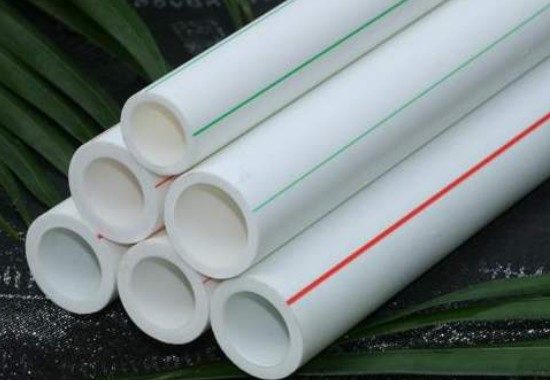Dec . 06, 2024 00:05 Back to list
China PPR Insulation Solutions for Hot Water Pipes in Residential and Commercial Settings
The Importance of PPR Hot Water Pipe Insulation in Modern Plumbing Systems
In recent years, Polypropylene Random Copolymer (PPR) pipes have gained significant popularity in plumbing and construction industries worldwide, particularly for hot water applications. Understanding the nuances of PPR hot water pipe insulation is crucial for ensuring efficiency, safety, and longevity in plumbing systems. This article delves into the benefits, applications, and best practices associated with insulating PPR hot water pipes.
What is PPR Pipe?
PPR pipes, made from a type of thermoplastic known as Random Copolymer Polypropylene, are renowned for their chemical resistance, durability, and versatility. They are lightweight and easy to install, making them a preferred choice for both residential and commercial plumbing systems. PPR pipes can handle high temperatures and pressures, making them suitable for hot water transport, which is essential in both domestic and industrial applications.
The Need for Insulation
While PPR pipes already possess certain inherent thermal properties, the insulation of hot water pipes is vital for several reasons
1. Energy Efficiency Insulating hot water pipes reduces heat loss during transportation. Without insulation, energy can be wasted as heat escapes into the surrounding environment. This inefficiency can lead to increased energy costs, especially in large buildings where hot water needs to travel through extensive piping systems. By using proper insulation materials, energy consumption can be minimized, making the entire plumbing system more sustainable.
2. User Comfort Insulated pipes maintain consistent water temperatures, reducing the wait time for hot water to reach fixtures. This not only enhances user comfort but also encourages the efficient use of hot water, helping to save water resources.
3. Preventing Condensation In cooler environments, uninsulated hot water pipes can lead to condensation on the surface, which may cause drips and potentially promote mold growth. Insulation prevents this condensation, improving air quality and protecting building structures from water damage.
4. Frost Protection In regions where temperatures can drop significantly, insulated hot water pipes are less susceptible to freezing, which can lead to pipe bursts and costly repairs. Proper insulation acts as a protective barrier against extreme cold.
Types of Insulation Materials
When it comes to insulating PPR hot water pipes, several materials are available, each with its advantages
china ppr hot water pipe insulation

- Foam Insulation This is one of the most common insulation types used for piping. Foam insulation can effectively minimize heat loss and is lightweight, making it easy to install.
- Fiber Glass Insulation This material is excellent for temperature control and is often used in commercial settings. However, it may require a vapor barrier to prevent moisture accumulation.
- Rubber Insulation Rubber materials provide good thermal insulation and flexibility. They are suitable for both hot and cold applications and can withstand high temperatures.
- Reflective Insulation Made of a reflective material, these insulations work by redirecting radiant heat, which is beneficial in warm climates.
Best Practices for Installation
To maximize the benefits of PPR hot water pipe insulation, it is essential to follow best practices during installation
1. Proper Coverage Ensure complete coverage of all hot water pipes without any gaps. Even small uninsulated sections can lead to significant heat loss.
2. Secure Fittings Use appropriate tape or adhesive to secure insulation around fittings and joints, as these are often weak points for heat loss.
3. Regular Maintenance Inspect insulated pipes regularly for any damages or wear. Over time, insulation can degrade, leading to reduced efficiency.
Conclusion
PPR hot water pipe insulation is a fundamental component of modern plumbing systems. By ensuring that hot water pipes are properly insulated, one can enhance energy efficiency, improve user comfort, reduce condensation, and protect against freezing temperatures. As the demand for sustainable building practices continues to rise, investing in high-quality insulation for PPR pipes will not only yield economic benefits but will also contribute to environmental preservation. By adopting these practices, both residential and commercial establishments can ensure a more efficient and durable plumbing system.
-
High-Quality PVC Borehole Pipes Durable & Versatile Pipe Solutions
NewsJul.08,2025
-
High-Quality PVC Perforated Pipes for Efficient Drainage Leading Manufacturers & Factories
NewsJul.08,2025
-
High-Quality PVC Borehole Pipes Durable Pipe Solutions by Leading Manufacturer
NewsJul.08,2025
-
High-Quality PVC Borehole Pipes Reliable PVC Pipe Manufacturer Solutions
NewsJul.07,2025
-
High-Quality UPVC Drain Pipes Durable HDPE & Drain Pipe Solutions
NewsJul.07,2025
-
High-Quality Conduit Pipes & HDPE Conduit Fittings Manufacturer Reliable Factory Supply
NewsJul.06,2025

